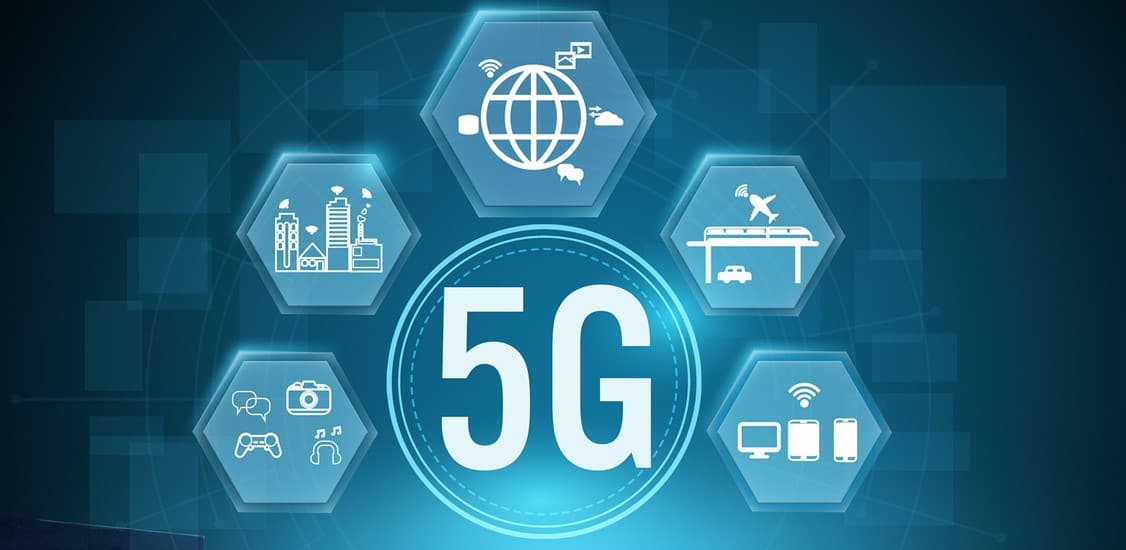According to MIT Technology Review, the introduction of 5G will be a technological paradigm shift comparable to that from the typewriter to the computer. With 5G imminent, telecom operators are hustling to develop their 5G-enabled services in a one-upmanship effort to be vanguards of the market. Simultaneously, India is already witnessing many smartphone makers such as Oneplus, Xiaomi and Oppo launching 5G-enabled mobile devices.
According to a report by Deloitte, as part of the strategy to build a robust high-speed 5G network infrastructure footprint, India aims to increase its fibre backbone to 2.5 million km by the year 2022, up from the current 1.5 million km. The report highlights how India's Department of Telecom (DoT) is in the process of setting up a development centre for 5G at IIT Madras to create the right ecosystem for 5G development in India. The set up of the ‘5G India 2020’ high-level forum, with the primary purpose of developing the roadmap for operationalizing 5G services in India, also indicates the priority that has been assigned to this effort.
Once 5G is fully deployed, there will be a paradigm shift in the way games, music and videos are consumed in this country. 5G will mean faster data speeds to download heavy data files/videos, while latency and time taken to recover information will tumble from 50 milliseconds to under one millisecond. Also, compared to the current standards of 90% uptime, network availability could go up to 99.99%.
Here’s how marketers empowered with 5G can find new opportunities to enhance the customer experience:
Promise of AR and VR realised
According to Business Insider, in 2018 there were around 171 million AR/VR active users in the world and the market is expected to become a $162 billion industry by 2020. 5G will be better equipped to handle this real-time exchange of video files which opens up unique opportunities for marketers who become early adopters. The gaming industry, of course, has been amongst the first to adopt VR and AR, but others like travel and e-commerce companies as well as publishers and social media platforms should already be considering ways to leverage these technologies to create more immersive experiences. 5G will be even further complemented by the use of haptic technology and suits that recreate the sense of touch by providing forces, vibrations, or motions to the user.
New media opportunities
With 5G, brands can tap into cutting edge new media such as real-time 3D holographic displays or in-car entertainment.
Have you thought of how much time we spend driving and commuting? These are consumer touchpoints to which brands still have limited access, something that will change with 5G. Over-the-top (OTT) media service companies will extend their home entertainment packages to in-car entertainment as well. As for 3D holographic displays, these will also enhance live marketing experiences in incredible ways. Can you imagine the Wankhede cricket stadium with 3D Pepsis and Red Bulls flying around during the game?
Less ad blocking with improved experiences
According to a report in 2017, ad blocking penetration in India on mobile stood at 28%, while on the desktop, it was 1%.
With the most popular browsers modifying their cookie strategies, these numbers are expected to continue to see a tectonic shift. With 5G, transfer times will decrease and marketers will be presented with the opportunity to develop more engaging ad experiences. These would be crucial to regaining consumer trust and keeping the ad-funded monetisation model afloat - one that is integral to publishers, content producers and service providers across the web. In turn, as ad experiences get better, we may also see a decline in ad blocking.
Media consumption explosion
India is the world’s fastest growing media market with a forecasted 22% CAGR for video streaming over the next few years. Content consumption and over-the-top (OTT) services - video, music, news and games - on mobile have exploded of late and will continue to experience meteoric growth as 5G connectivity lowers the cost of data whilst simultaneously boosting transfer speeds.
This trend will give marketers a growing platform to connect deeply with consumers and present new and better engagement opportunities, especially for small-to-medium enterprises (SMEs) to engage huge audiences.
Pinpointing location with data accuracy
4G networks today can only truly provide aggregate movement patterns rather than accurate location signals, which is why brands still haven’t been able to explore location-based marketing to its full potential.
In contrast, 5G will bring with it high-fidelity location data in real-time that can open doors to high-performance local and proximity marketing at scale.
5G is fast on its way with a smorgasbord of opportunities for growth, innovation and creativity. One can expect seismic improvements in technology leading to dramatically improved consumer experiences. The only constraint will be human imagination. Marketers should start planning now and dream big.




















